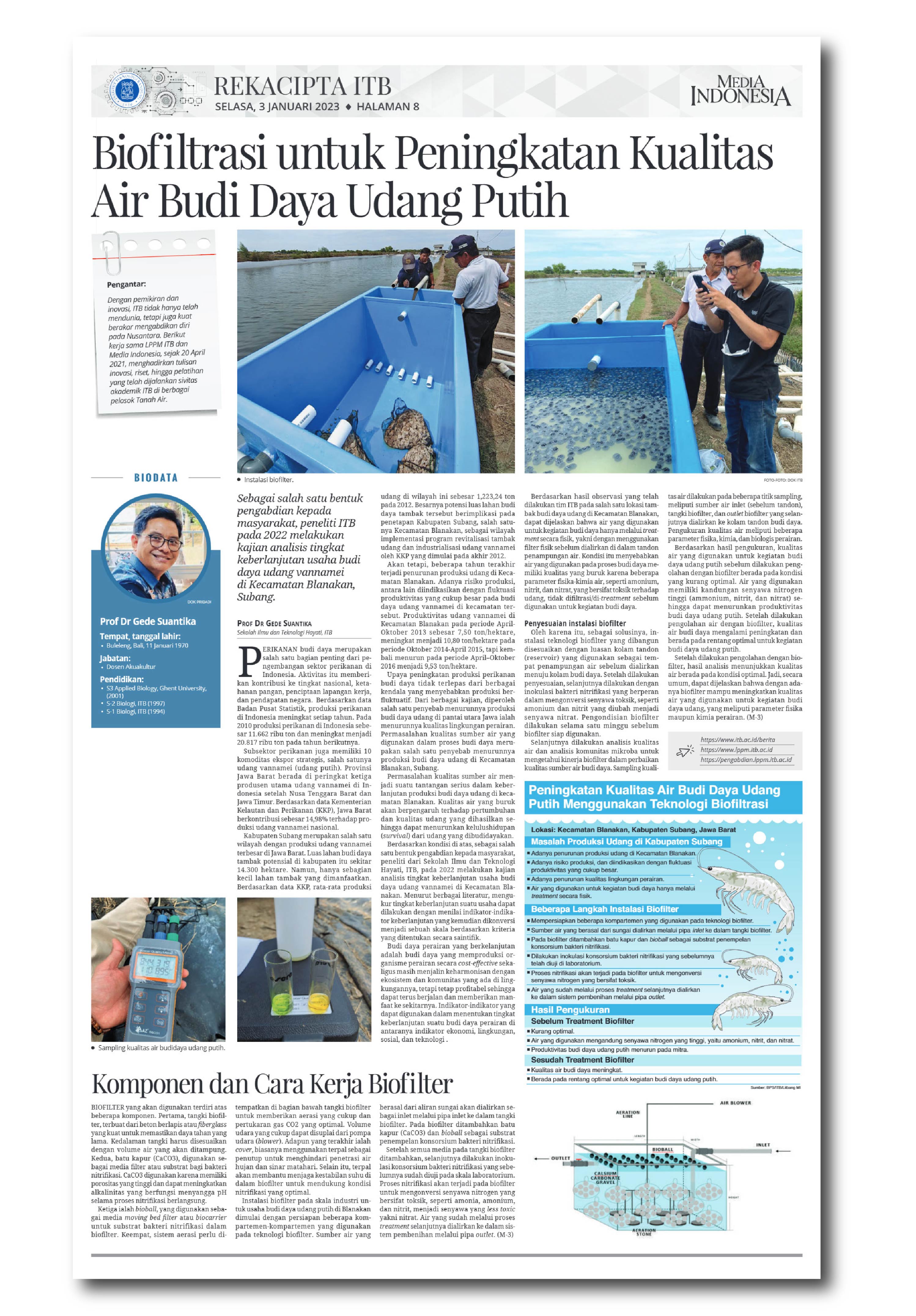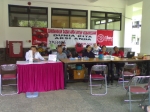ITB SITH Develops Biofiter Technology to Improve Water Quality for Shrimp Cultivation
By Adi Permana
Editor Adi Permana

BANDUNG, itb.ac.kd — Aquaculture is an integral part of Indonesia's fishery sector. According to the Central Institution of Statistics data, Indonesia's fishery production shows significant annual increases, with 11,662 thousand tonnes of goods in 2010 and 20.817 thousand tonnes in the following year.
Prof. Dr. Gede Suantika from ITB SITH revealed that each fishing sub-sector has ten strategic export commodities, including the white (vannamei) shrimp. "The West Java province is ranked third as the main producer, following Western Nusa Tenggara and East Java. According to the Ministry of Marine Affairs and Fisheries (MAF), West Java contributed 14.98% of the national production of white shrimp."
Subang has one of the most extensive white shrimp farming, with cultivation ponds expanding to about 14,300 hectares. However, only a portion of it is utilized. In 2012, the average shrimp production there reached 1,223.24 tonnes.
The potential of Subang specializing in shrimp cultivation, especially in Blanakan, led to its designation by MAF as the region to revitalize white shrimps in late 2012.
Unfortunately, Blanakan's shrimp production has been declining for the past few years due to its risk in production, such as its high productivity fluctuation. Several studies show that the degraded water quality also reduces the survivability of cultivated shrimps.
As an act of service to the community, Prof. Dr. Gede Suantika and a few other researchers from ITB SITH analyzed the sustainability level of the white shrimp cultivation industry in Blanakan Subdistrict. The analysis done in 2022 evaluated various sustainability indicators and converted them into a scientific criteria-based scale.
"Sustainable aquaculture cultivation produces cost-effective aqua livestock while maintaining harmony with the ecosystem and community. Prof. Dr. Gede explained. "The business will still be profitable."
Observation revealed that one of the cultivating spots in Blanakan undergoes only physical maintenance. The water flows through a filter before being directed into a reservoir. This method leads to low-level water quality because of the unfiltered toxic physical-chemical components found in the water, like ammonium, nitrite, and nitrate.
To resolve the issue, the ITB SITH team installed a modified biofilter based on the reservoir conditions that collect water before streaming into the cultivating pools. The biofilter was made from layered concrete or durable fiberglass. Nitrifying bacteria were inoculated to it to convert the toxic nitrate compounds. Then, the biofilter was conditioned for a week. Afterwards, the team analyzed the water quality and presence of microbes to observe the device's performance. Sampling was done at selected points, including the inlet, biofilter tank, and outlet.
Based on the observation, the biofilter enhances water quality and is optimal for cultivating white shrimp.
This article has been published in the Media Indonesia Rekacipta ITB.

Reporter: Sekar Dianwido Bisowarno (Bioengineering, 2019)
Translator: Firzana Aisya (Bioengineering 2019).

.jpg)
.jpg)
.jpg)
.jpg)
.jpg)

